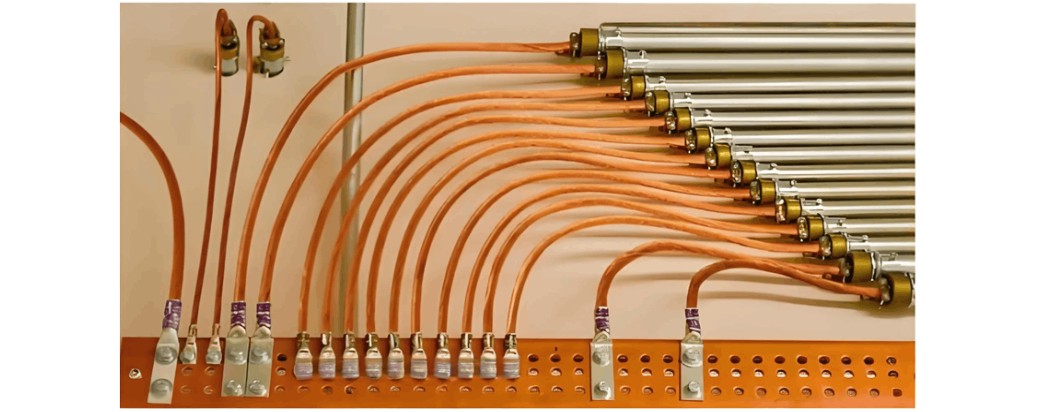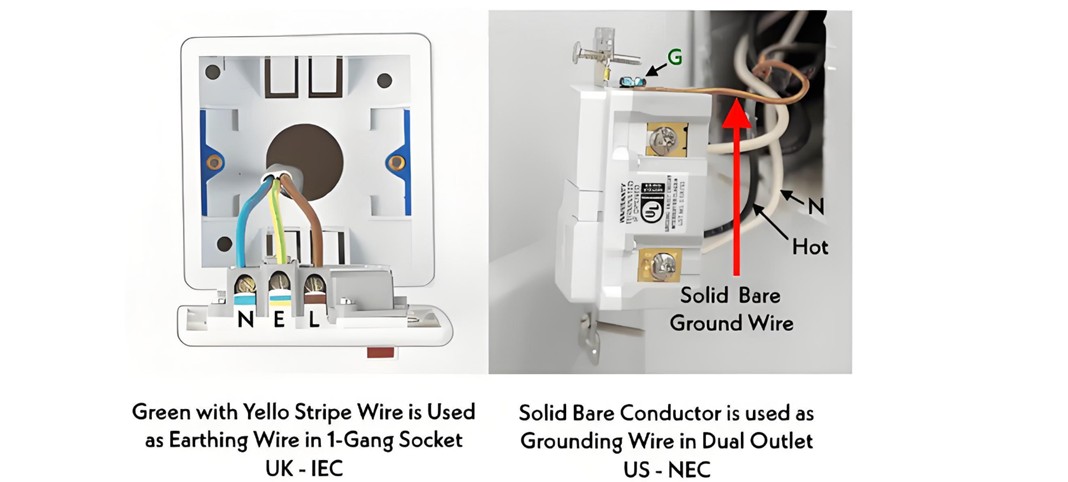Why is the Grounding Wire Bare and Not Insulated?
Why is Mostly Solid Bare Conductor Used for Grounding Instead of Insulated Wire?
A ground wire, also known as a grounding wire or ground conductor, as the name implies, is an electrical wire connected from the transformer and main panel (or distribution board) to the ground rod or earthing plate via an earthing lead buried in the ground or Earth. It is connected to all metallic parts that may come into contact with the human body to prevent electric shocks in case the hot (phase or line) wire accidentally touches the machine or electrical device.

The Role and Specifications of Ground Wires in Electrical Systems
In an electrical grounding or earthing system, the ground wire plays a pivotal role by providing a secure pathway for electrical currents to dissipate into the earth. This function serves as a critical safety measure, protecting against electric shocks and preventing fires that could result from fault currents within the circuit, such as those caused by short circuits or leakage currents. When such faults occur, the ground wire safely diverts the errant electrical energy away from people and equipment, minimizing the risk of hazardous situations.
The National Electric Code (NEC) stipulates that a bare copper conductor is the preferred choice for use as a grounding conductor. This recommendation is based on copper's excellent electrical conductivity and durability, ensuring reliable performance in grounding applications. Although bare copper conductors are the standard, when insulated grounding wires are employed as an alternative, common color - coding practices are followed. Typically, these insulated grounding wires are colored green or feature a green sheath with a yellow stripe, which helps electricians and technicians easily identify them as grounding components during installation, maintenance, and inspection.
In contrast, the International Electrotechnical Commission (IEC) has its own set of color - coding standards for earth wires. According to the IEC, the designated color for earth wires is light blue. It's important to note that in the United Kingdom, prior to 2004, the color black was used for earth wires, highlighting the evolution of electrical standards over time and the need for professionals to stay updated on these changes to ensure compliance and safety in electrical installations.

It is crucial to understand that although there are certain circumstances where ground conductors might be encased in conduits or insulated with protective materials to shield them from physical harm, the majority of the time, ground wires remain uninsulated due to the factors previously discussed. For instance, in metal - clad cables, the choice between using insulated or bare grounding conductors depends on the specific requirements of the electrical system. In some setups, a bare grounding conductor might be sufficient to ensure effective grounding and meet safety standards, while in others, an insulated grounding conductor could be necessary to safeguard against additional risks or to comply with more stringent installation codes. This variability highlights the importance of considering the unique characteristics and needs of each electrical installation when determining the appropriate type of grounding conductor.
The Electricity Encyclopedia is dedicated to accelerating the dissemination and application of electricity knowledge and adding impetus to the development and innovation of the electricity industry.













